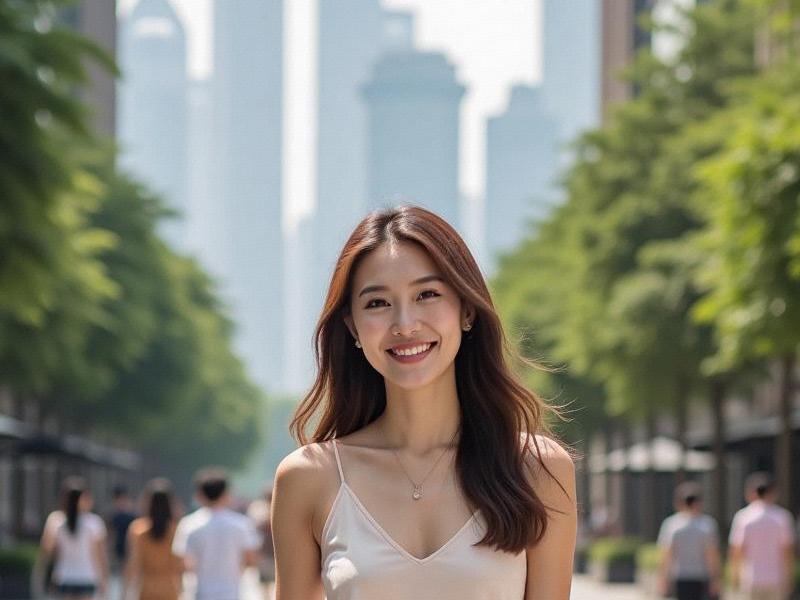Shanghai's Creative Revolution: How China's Cultural Capital is Inspiring the Yangtze Delta
⏱ 2025-06-19 00:08 🔖 上海龙凤419
📢0℃

The cobblestone alleys of Shanghai's West Bund now pulse with a creative energy that rivals Paris's Left Bank or London's South Bank. What began as industrial warehouses along the Huangpu River has blossomed into Asia's most dynamic cultural corridor, housing 52 museums, 380 galleries, and over 1,200 creative studios. This transformation represents more than urban renewal - it's the flowering of Shanghai's ambition to become the cultural capital of 21st century Asia while serving as the creative engine for the entire Yangtze Delta region.
The numbers reveal a cultural boom:
• Shanghai's creative economy now contributes 18.7% to city GDP (up from 12% in 2020)
• Cultural consumption per capita reached ¥12,800 ($1,780) in 2024
• The West Bund cultural corridor attracts 28 million visitors annually
• 63% of Shanghai's historic shikumen buildings now host creative enterprises
Architectural preservation meets innovation. The adaptive reuse of industrial heritage has created:
1. Tank Shanghai - 50,000 sqm contemporary art complex in converted fuel tanks
上海龙凤千花1314 2. M50 - 400 artist studios in preserved textile mills
3. Columbia Circle - 1920s villas transformed into design incubators
4. Shanghai Film Park - Backlot facilities attracting global productions
Creative clusters redefine regional geography. The "Shanghai-Suzhou-Hangzhou Design Triangle" now features:
• Shanghai's West Bund (museums and digital art)
• Suzhou's Jinji Lake (crafts and industrial design)
• Hangzhou's Xiangshan (architecture and rural revitalization)
• Ningbo's Dongqian Lake (cultural technology)
上海水磨外卖工作室
Cultural infrastructure sets new standards. Recent additions include:
• Shanghai Library East - The world's most advanced digital archive
• Shanghai Grand Opera House - Acclaimed for its revolutionary acoustics
• Power Station of Art - Asia's first state-run contemporary art museum
• SMG BesTV Culture - China's largest 8K virtual production studio
Technology reshapes cultural expression. Shanghai leads in:
• Digital heritage preservation (3D scanning 1,000 historic buildings)
上海品茶论坛 • AI-assisted art creation (used by 38% of local artists)
• Blockchain art authentication (adopted by all major galleries)
• Immersive theater experiences (72 venues offering VR/AR performances)
Creative education fuels the revolution. Shanghai now boasts:
• 28 specialized art high schools
• 9 university arts incubators
• Asia's first UNESCO Creative City of Design program
• 126 international cultural exchange programs
As sunset paints the Huangpu River gold, the cultural energy radiating from Shanghai illuminates the entire Yangtze Delta. From Suzhou's silk embroidery masters collaborating with VR artists to Hangzhou's tea ceremony innovators blending tradition with modern design, Shanghai's creative awakening has sparked a regional renaissance. This isn't just about art for art's sake - it's proving that culture can be both economically vital and socially transformative, with Shanghai writing a new playbook for creative urban development in the Asian century.
Shanghai After Dark: How Luxury Entertainment Venues Are Redefining Urban NightlifeDelta Dynamics: How Shanghai's Economic Gravity is Reshaping the Yangtze River Basin"From Water Towns to Smart Cities: The Cultural DNA Reshaping Shanghai's Metropolitan Identity"Greater Shanghai 2025: The Making of a Global MegalopolisShanghai Beauties: A Modern Portrait of Elegance and BeautyNeon Dragon: The Reinvention of Shanghai's Entertainment Club Industry in the Post-Pandemic EraQuantum Leap: How Shanghai and Its Satellite Cities Are Rewriting the Rules of Regional DevelopmentShanghai: A Vibrant City of Diversity and Innovation"Shanghai's New Femininity: How Urban Women Are Redefining Chinese Modernity"The Shanghai Nexus: When One City Becomes Thirty

